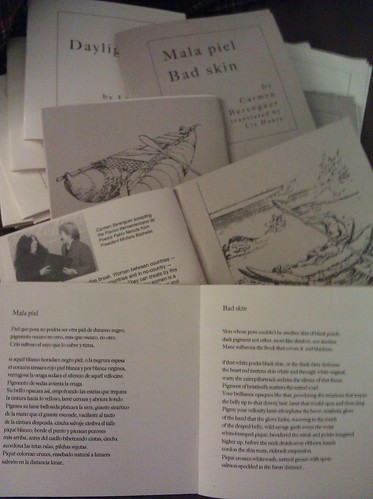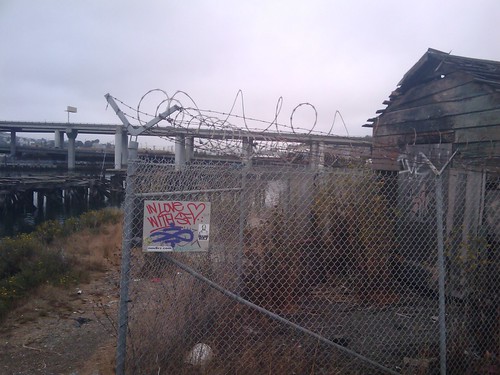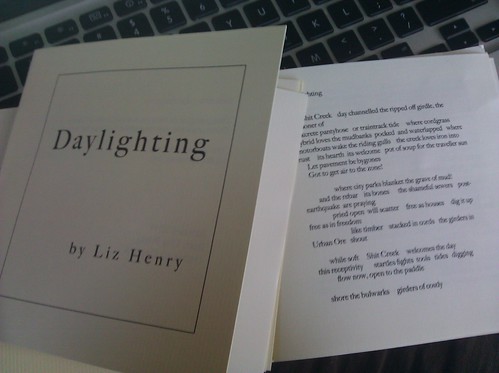Bad skin is my translation of Mala piel, a poem by Carmen Berenguer. It’s about bodies, women’s body, color, texture, in a political anti-dissection of the conventions of anatomical description that catalogues our body parts. It made me think of Monique Wittig’s work The Lesbian Body, but written in densely disruptive neobarroque (or neobarroso) verses.
Mala piel branches into multiple directions or layers, evoking the history and landscape of ocean-faring indigenous people of Chile, who lived most of their lives in their doubled canoes. Women owned the boats and hunted shellfish underwater; men and boys were forbidden to learn how to swim, gathering eggs and other food on land.
I had mixed feelings about surrounding the poem and translation with other stuff. Illustrations, a short encyclopedia entry about the history of the Kwashkar or Alcalufe people, a little quote from Helene Cixous “The Laugh of the Medusa” (“Le rire de la méduse”), a photo of Berenguer accepting a literary prize from Chile’s President Bachelet. In my impulse to provide context, I may be suffocating the work. It’s a poem best read multiple times or circularly. It’s strong and weird. Maybe it should stand alone. Why did I surround it with these trappings of legitimacy? While I love context and footnotes and glossaries and cheat sheets, biographies, research, and history, and fancy talk about decolonization, if you don’t love that stuff, please ignore it. Read the poem however you like!
As long as you love its stretchmarks and pores, and notice a little of the politics, I’m happy!
The cover of the book is warm brown and randomly speckled – Mohawk Kraft cardstock – and the pages are natural linen, 24 lb. I printed 250 and am planning on mailing 50 of them to Carmen.
Here is a video of Carmen Berenguer at a reading,
Enjoy!


